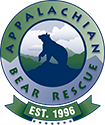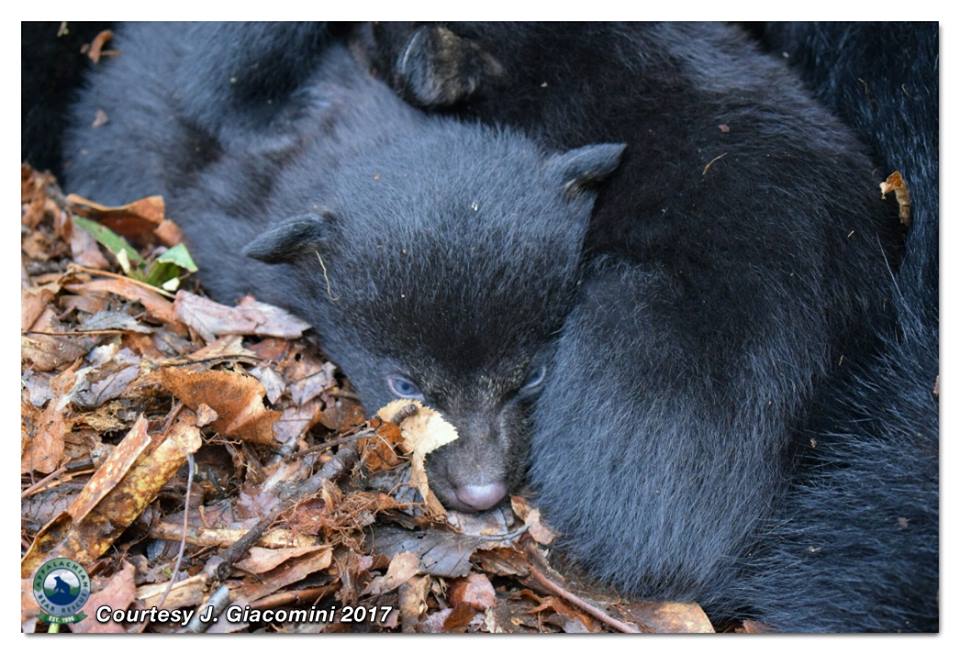Today we have a very special treat for you. We’ve posted about Curator Coy’s research in connection with his Master’s thesis and as you know, he is following the GPS-collared cubs that were released last year and earlier in 2017. Jessica, another graduate student, is doing a similar study, but the bears she has collared and is following are bears from the Great Smoky Mountains National Park.
Recently Coy and Jessica went hiking to find dens being used by the study bears. When they located the den of one of Jessica’s adult female bears, they discovered her with her family – she had given birth to three male cubs! We are excited to be able to share these photos of the bear family in their den.
The photos had to be taken quickly, as you can imagine. The sow was given a mild sedative, even though hibernating bears are sleepy and not terribly active. The cubs, about two months old, were easy to handle, although Coy and Jessica were careful not to spend too much time with them.

Cubs were nestled in with their mother.

Is this a yawn or is the cub squalling? Hard to tell.

Even at such a young age a bear cub has a long tongue.

The little cub settles back down to snooze.
These cubs and their mother will probably be ready to emerge from their den within the next month. We hope that they are able to stay together and that there will be plenty of food for them when they come out to explore and learn.
Coy and Jessica are able to track the study bears and share information as they continue to work on their projects.

Coy and Jessica collaborate and share their data.
ABR is proud that These studies are taking place and that our curator is learning so much about the bears that were released. The information will help researchers and others to understand the movements of these animals.


